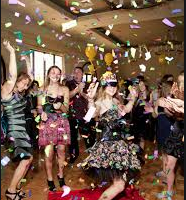Between Gender & Nation
Sheila Katz’s ambitious project, Women and Gender in Early Jewish and Palestinian Nationalism (University Press of Florida, $55), attempts to address the roles of and attitudes toward women in the opening decades of the Jewish and Palestinian nationalist movements (pre-1948). She claims that early nationalist discourses were highly gendered, contributing both to the creation of national communities and to the bloody modern conflict between them.
Both Jewish and Palestinian nationalisms, Katz argues, were bound up in images of masculinity that excluded or marginalized women. For the Zionists, nationalism provided an opportunity to regain a masculinity “lost” in exile; she quotes Max Nordau’s 1898 address when he predicted that the “new muscle-Jews[would] surpass their [Hellenistic] ancestors” and thus escape the weakness of Galut—exile—a concept consistently coded as both passive and feminine. French Zionist Bernard Lazare wrote that a Jew declaring his nationalist fervor translates as “I want to be a man fully free….” In parallel form, she quotes Abd al-Rahim Mahmud, a Mandate-era Palestinian poet: “1 will guard my land with my sword so that all will know that I am a man!” Land was bound up with a fear of emasculation; the struggles for nationhood and eventually statehood were the ultimate declaration of manhood, a declaration that left women on the historical sidelines. The land was the metaphorical feminine receiver of male nationalism’s bounty. Numerous Palestinian poets evoke Palestine as a woman in need of protection as well as adoration; many Zionist sources discuss the marriage of the (masculinized) Jewish people to the (feminized) land in order to complete the Jews and to fulfill the land. Both nationalist discourses refer to the barrenness of the (female) land and the need for the blood and sweat of the working (men) to fertilizer; they also overlap in references to the land as both mother and female lover As Katz points out, this language necessarily excludes women, who would not be expected to become the land’s lesbian lovers. Katz weaves together both national accounts to form a coherent narrative, describing the symbolic role of women’s liberation for the different camps, and showing how women’s bodies, education, and customs were viewed as symbols of modernity and progress. Whether as representations of fundamental cultural/ethnic/national differences or as examples of the way that the “enemy” treated the other side, women were constantly the sites of nationalist rhetorical jousting.
Although interesting and valuable in parts, Katz’s analysis often seems painfully native for an historian of the conflict. It would be disingenuous to imagine that Zionism or Palestinian nationalism could provide a liberation for women that had occurred neither before nationalism nor within the scope of any other nationalist movement. Throughout the history of nationalist movements, women have felt torn between solidarity with other women and pressure to remain aligned with their own race, nation, or ethnicity.
Zinaida Miller’s undergraduate thesis was “An Arranged Marriage? A Proposal for a Truth Commission in Israel/ Palestine.” She is a student at Harvard Law School, focusing on international human rights.


